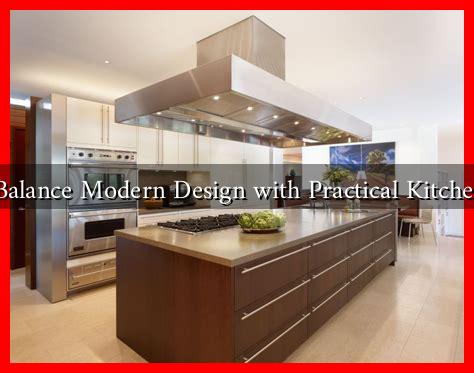-
Table of Contents
- How to Balance Modern Design with Practical Kitchen Needs
- Understanding Modern Design Trends
- Identifying Practical Kitchen Needs
- Strategies for Balancing Design and Functionality
- 1. Smart Layout Planning
- 2. Multi-Functional Furniture
- 3. Innovative Storage Solutions
- 4. Choose Durable Materials
- 5. Incorporate Technology Wisely
- Case Studies: Successful Balancing Acts
- Conclusion
How to Balance Modern Design with Practical Kitchen Needs
The kitchen is often considered the heart of the home, a space where culinary creativity meets family gatherings. As modern design trends evolve, homeowners face the challenge of balancing aesthetic appeal with practical functionality. This article explores how to achieve that balance, ensuring your kitchen is both stylish and efficient.
Understanding Modern Design Trends
Modern kitchen design emphasizes clean lines, minimalism, and a seamless integration of technology. Key trends include:
- Open Concept Layouts: These designs promote social interaction and make the kitchen feel more spacious.
- Smart Appliances: Technology is integrated into kitchen design, with appliances that enhance convenience and efficiency.
- Natural Materials: Wood, stone, and metal are popular choices that add warmth and texture.
- Bold Colors and Patterns: While minimalism is key, splashes of color or unique patterns can create focal points.
While these trends are visually appealing, they must also accommodate the practical needs of daily cooking and entertaining.
Identifying Practical Kitchen Needs
Before diving into design choices, it’s essential to identify the practical needs of your kitchen. Consider the following:
- Storage: Ample storage is crucial for keeping the kitchen organized and functional.
- Work Surface: Sufficient counter space is necessary for meal preparation and cooking.
- Appliance Accessibility: Frequently used appliances should be easily accessible to streamline cooking processes.
- Lighting: Adequate lighting is essential for both safety and ambiance.
Strategies for Balancing Design and Functionality
Here are some effective strategies to harmonize modern design with practical kitchen needs:
1. Smart Layout Planning
Utilize the kitchen work triangle concept, which positions the sink, stove, and refrigerator in a triangular layout to enhance workflow. This design minimizes movement and maximizes efficiency.
2. Multi-Functional Furniture
Incorporate furniture that serves multiple purposes. For example:
- Kitchen Islands: These can provide additional counter space, storage, and seating.
- Foldable Tables: Ideal for small spaces, they can be expanded when needed and tucked away when not in use.
3. Innovative Storage Solutions
Maximize storage with creative solutions such as:
- Pull-Out Cabinets: These can make accessing pots and pans easier.
- Vertical Storage: Use wall-mounted shelves or pegboards to free up counter space.
4. Choose Durable Materials
Opt for materials that are both stylish and durable. For instance, quartz countertops offer a modern look while being resistant to stains and scratches. Similarly, high-quality cabinetry can withstand daily wear and tear.
5. Incorporate Technology Wisely
Smart appliances can enhance functionality without compromising design. For example, a sleek, built-in refrigerator can maintain a clean aesthetic while providing advanced features like temperature control and energy efficiency.
Case Studies: Successful Balancing Acts
Several homeowners have successfully balanced modern design with practical needs. For instance, a recent renovation in a New York City apartment featured:
- A compact kitchen with a foldable island that serves as both a dining area and additional prep space.
- Smart lighting that adjusts based on the time of day, enhancing both functionality and ambiance.
This kitchen not only looks modern but also meets the daily needs of a busy family.
Conclusion
Balancing modern design with practical kitchen needs is achievable through thoughtful planning and innovative solutions. By understanding current design trends, identifying essential kitchen functions, and implementing smart strategies, homeowners can create a space that is both beautiful and functional. Remember, the key is to prioritize your needs while embracing the aesthetics that inspire you. For more insights on kitchen design, consider visiting Houzz, a platform dedicated to home improvement and design.

